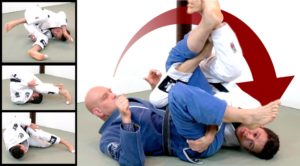The use of frames is key when you’re defending against the Matador Pass, commonly known as Toreando or Bullfighter pass.
If you engage in a battle of strength versus strength, then whoever is stronger will win.
But if you can use frames to negate your opponent’s strength then you can defeat much bigger and stronger opponents.
Here’s a video I filmed with Rory Van Vliet on defending the Matador Pass using your frames when your opponent is almost past your guard…
The Matador Pass
The Matador pass can be a relentless and efficient way of passing guard. The passer controls the legs with pant grips and then uses misdirection and side to side movements – just like a bullfighter – to redirect the legs to one side as they step in to gain a superior top position.
The old-school matador pass was basically a leg toss; you would control both ankles, fake throwing them one way and then toss them the other way before passing.
The more modern matador pass involves continuing to control both legs for the whole duration of the pass, using your arms as frames to redirect the legs and prevent the reguard.
Typically that modern matador will look something like this…
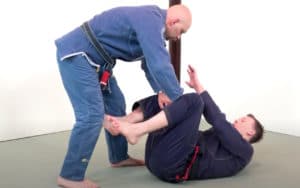
Matador Pass Step 1: Control the lower legs with your grips
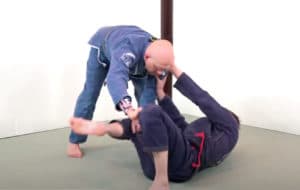
Matador Pass Step 2: Circle and drive the near leg down and the far leg away from you
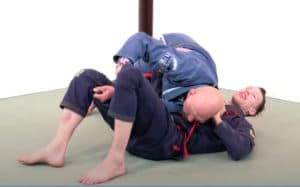
Matador Pass Step 3: Drop your weight onto your opponent while maintaining control over the legs
Late Stage Defense to the Matador Pass
Let’s say that you missed all the early opportunities to defend the matador pass.
Your opponent has successfully controlled your legs and the pace of the match. He’s started to pass your legs and is about to drop his weight onto you.
This is where changing the angle of where you work your defence from can be the difference between getting smashed and a strategic re-guard.
By framing on the shoulder with your arms straight and walking your hips out even further, as far as to the North South position, you can maintain a good holding distance from your partner.
This helps break the far pant control, and brings you into a position to work your inversion more freely.
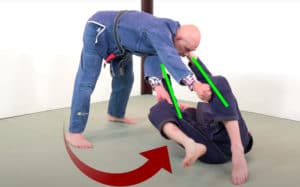
Late Stage Matador Defense 1: Rotate your body further away and maintain frames with your arms
With both arms straight locked maintaining the distance, you lift your hips upward, replace your arm frames with your feet either on the biceps or shoulders.
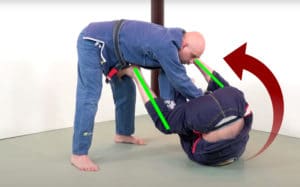
Late Stage Matador Defense 2: Invert and replace arm frames with leg frames
Once you’re in the inverted position then unless you’re an inverted guard specialist you don’t want to stay here for very long because being bent on your neck and back and bearing pressure is not ideal for the long term health of your spine and back. I
Inversion can be viewed simply as a station along the route you are alternatively travelling, back to a re-guard
Most practitioners, as soon as they get the chance, should maintain contact with one leg and spin back to the guard. This ‘unwinding’ motion is very similar to the second half of the tornado roll detailed in the drills section of this article about BJJ inversions.
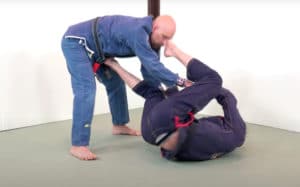
Matador Pass Late Stage Defense 3 – Unwinding the Inversion
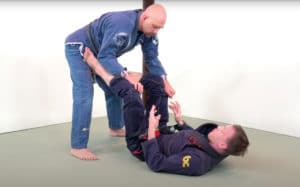
Matador Pass Late Stage Defense 4 – Re-establishing the guard
By exploring alternate routes in your guard game like inverting you open up a much wider range of defences against guard passes.
Choosing to invert can give you that split second you need in maintaining the distance to recover from what could have been a disastrous position. Go ahead, give it a shot!
Additional Resources
If you’re interested in learning more about shutting down your opponent’s guard passes then I highly recommend The Guard Retention Formula instructional.
Click here for more information about The Guard Retention Formula, a detailed instructional on making it really hard for your opponents to pass your guard.
If all this mentioning of going upside down while grappling seems a little strange then click here to read A Primer for Inversions in BJJ.
It’ll help you understand the advantages of incorporating this movement into your jiu-jitsu and show you a series of drills to make that movement smooth and instinctive.
And if you’re new to the sport then download your digital copy of my Roadmap for BJJ guide and get training tips by email after entering your email address below…
The post Last Ditch Matador Guard Pass Defense appeared first on Grapplearts.


